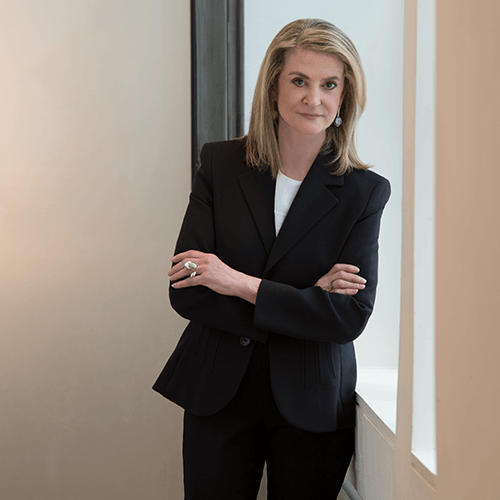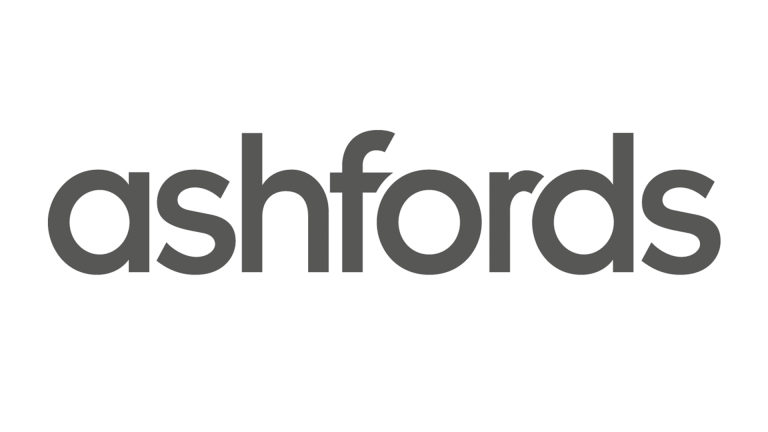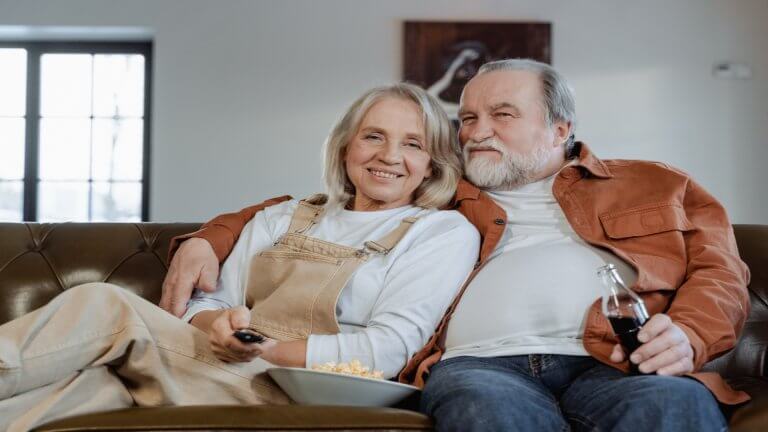Lilian Weinreich. Photo: ©Steve Freihon
Formal simplicity requires intellectual rigor and aesthetic restraint – which is immediately apparent in each of the firm’s
projects – from the reinvention of a building in Gramercy Park with duplex apartments to the remodel of a Central Park
South bath and dressing room. The firm’s portfolio includes a range of high-end apartment building, duplex and townhouse renovations, as well as institutional work. Each project is opulent in the clarity of its spatial and functional resolution.
Weinreich’s pure sensibility evolves not from a predetermined architectural style, but rather from the intent to design clean, intelligent and functional space that operates as a background to what is contained within them. Working with space and light as sculptural materials, LHWA constructs architecture dramatic in its purity of means. “My aesthetic is entrenched in the modern, using prevailing technology to create leadingedge environments that are simple yet intelligent and sophisticated ‘the new modern’”, Weinreich says. “My goal is always to aim for the essence of timelessness and the paramount in design as well as in execution.”
Weinreich cites her Australian upbringing as a major aesthetic influence, instilling sensitivity to the natural environment as well as a proclivity to architectural modernism from her family home. Her parents, Holocaust survivors, commissioned famed architect Harry Seidler, an Austrian-born Australian architect, to design a house in the early 1960s. A leading proponent of modernism in Australia, Seidler was the first architect to fully express the principles of the International Modern Bauhaus in the country.
In 2013, the Weinreich house was given a Sydney Heritage Building Registry citation. Weinreich’s parents recognised her artistic talents at a young age and, when she was 14, they arranged private tuition with Professor Maximilian Feurerring in his Woollarah studio. Feuerring was considered to be one of Australia’s leading painters. Feurring did not teach children, but made an exception for Weinreich, whom he considered a prodigy. In rigorous weekly sessions, she reproduced works by modern painters such as Gauguin, Cezanne, Chagall, Modigliani and Clave and all of these paintings still hang in the family home in Australia. Through these lessons, Weinreich developed a regular following amongst his other pupils and friends, unbeknownst to her until years later. She chose Feurring as subject of her highly awarded Bachelor of Fine Arts Honours Thesis at Sydney University.
Growing up in a home and within a family that fully embraced the methodology of modernism shaped Weinreich’s uncompromising aesthetics. These influences can be seen in the firm’s signature vocabulary—defined by essential reductivism, fastidious attention to detail and execution and sensitivity to the intrinsic properties of building materials and the environment. “Australians, by nature, have an honesty in their intent,” Weinreich says. “I strive to find the most direct and honest resolution in my work.”
The day after Weinreich became a registered architect in Australia, she set off to New York City. She says, “This was an unexpectedly difficult transition. While I still consider myself an Australian, I could not imagine being based anywhere else in the world. The United States has awarded me amazing opportunities and career choices – for which I am very grateful.”
When beginning a new project, LHWA’s approach to design is defined by a specific set of criteria: the unique needs of the individual clients and their space; the development of an unequivocal, clean, simple, seamless and sophisticated background for the programmatic requirements; and the creation of an aesthetically unencumbered environment.
requests the real estate floor plan or a site plan, existing photos, and the clients’ wish list. She wants to take the time to think about the opportunities of the prospective job and to come to the first meeting prepared with an initial design idea.
“Interestingly enough, and to great personal satisfaction, my first sketch often reflects the built end product,” says Weinreich—a testament to her intuitive and visionary design ability, as well as her dedication to uncovering the right architectural solutions for her clients. For an interview for one particular apartment commission, she had learned from the real estate broker that the client had previously interviewed six other architects before meeting her. “The client selected me on the spot,” she recalls. “About halfway through the job, I asked him why he chose me. His reply: ‘You came with a vision’.”
Painting with Light
A key signature of the LHWA aesthetic is the precise application of light. The lighting schemes in all of the firm’s projects are designed to enhance spatial quality. In New York City apartment buildings, ceilings are traditionally lowered in bathrooms to accommodate plumbing pipes above, and Weinreich’s innovative solutions can often be found at this transition between ceiling heights. In the NoHo Duplex in downtown Manhattan, this condition becomes a design feature; lit cove edges soften the lowered ceiling at the entry to the powder room and master bathroom are ghosted behind full-height, eleven-foot tall sliding glazed panels doors.
Inside the master bathroom, backlit dropped ceilings at the rear wall visually heighten the space while giving the interiors a warm glow. In the West 72nd Street Duplex on New York City’s Upper West Side, an infinity lit ceiling edge visually opens up the ceiling plane of the Calcutta gold clad master bathroom.
This visual elongation of space appears throughout the firm’s portfolio, developed in response to working and building in Manhattan. Many In the West 67th Street Apartment, now under construction, perimeter dropped ceilings frame and define the main living spaces and innovative knife-edge cove lighting emphasises the full-height ceilings. The lowered ceilings house mechanical equipment, ducts, pipes, structural support for the tracks, audio-visual equipment, wiring and recessed light slots. By lowering a ceiling height to highlight function, the sculptural interplay of dropped ceiling planes creates an illusion of a vertical spatial openness.
Sliding Panels, Flexible Space
LHWA also employs full-height sliding panels as a signature design feature to enhance the feeling of soaring verticality—no matter if the floor to ceiling height is an eleven-foot loft space or an eight-foot post-war highrise.
The firm’s design vocabulary uses full-height sliding panels to shape and elongate space, provide functional flexibility and shield visibility.
In the NoHo Duplex, the powder room and master bedroom ensuite are separated by a series of eleven foot-tall, fully retractable, sliding, steelframed glass panels. These featured full-height elements create a perspectival vista to what appears to be an ostensibly larger space beyond.
The glazed panels soften the glowing cove edges above the entries post war high-rise apartments in New York were built with low ceilings throughout—a developer device to minimise cost and to maximise the number of apartments. In the West 72nd Street duplex, LHWA’s renovation opens up the ceiling on the main floor to full height, while using a hovering ceiling plane softened with lit coves as a visual highlight.
Large open spaces with flexible functions are highly desirable in cities like New York, where real estate space is at a premium. The combination of two apartments on Lexington Avenue, currently under construction, incorporates sets of sliding translucent panels to create options in how the clients can configure the spaces—all open for entertaining and maximum daylight, or closed in multiple configurations for varying levels of privacy. The renovation of the West 72nd Street Duplex opens the main level of the duplex into one large, open, utilitarian space for dining, living and entertainment with full width unobstructed window views. The den space can be partitioned off with three full-height Shoji screens, designed in collaboration with the Italian manufacturer, when it needs to serve as a temporary sleeping area.
Design and Material Innovation
Weinreich’s work highlights an innovative use of materials. The design and fabrication of the NoHo Duplex’s staircase presented the biggest single challenge of the project. The staircase’s co-planar, clear-tempered glass rails and childproof open slots elegantly comply with rigorous code and child safety standards. For a unique handcrafted industrial appearance, metalworkers forged all of the project’s metalwork, including the stair supports and door frames, on site.
Functionality
The work of LHWA combines a clean modern aesthetic with an understanding of how people will actually live and use the spaces on a daily basis. All of the firm’s projects integrate extensive storage. The NoHo Duplex has floor-to-ceiling storage in the master bedroom, lower level playroom and children’s bedrooms. In the Central Park South Apartment’s kitchen, the renovation integrated a commercial-quality kitchen into a residential setting, enabling the client’s in-house chef to cater for over a thousand guests per year. The kitchen facilitates both intimate family gatherings as well as formal sit-down banquets for heads of state, dignitaries and royalty, complete with silver service and tuxedoed waiters.
New full height upper cabinets, floor-to-ceiling pantry closets and the utiliSation of all under the counter island spaces, increased the storage capacity of this kitchen by 20%.
Recognition
LHWA enjoys a high-profile Internet presence, which continues to be a strong source of new work. The firm’s number of projects has tripled over the last two years with commissions of increasing size and scope. However, Weinreich never turns away a project because of its size. “If I see a potential design interest, I will take the job,” she says.
The firm’s greater visibility includes three publications featuring Weinreich’s work coming out at the end of 2016. Her work was prominently featured in the latest edition in the BBeyond Publication Series, entitled Fabulous Interiors and Architecture. The coffee table book’s international theme covers “interior and architectural icons of today/classic landmarks of tomorrow”, targeting a high net worth audience and covering the issues that matter to them and their lifestyles. LHWA in the only New York City architect featured in the publication.
Weinreich credits her success to her dedicated team of collaborators, skilled contractors and artisans as well as her husband, Dr. Michael Ezekowitz. Weinreich calls upon the support of the world-renowned cardiologist— cited by Thompson-Reuters in the top one percent of scientists in the world due to his research and publications—for his innate eye for detail and skill as a client and contractor liaison.
LHWA is currently working on several new projects, including two large apartment remodels, one on Park Avenue and the other on Central Park South, a building in Gramercy Park with duplex units and a house in Avon, Connecticut. The firm is also exploring new markets, including the design of private jet interiors and commercial projects, where Weinreich’s considered, innovative design aesthetic can be applied in new ways.
Name: Lilian H. Weinreich, AIA RAIA LEED-AP(BD C), NCARB
Firm: Lilian H. Weinreich Architects
Email: [email protected]
Web Address: http://weinreich-architects.com
Address: 150 Central Park South #502
New York, New York 10019-1566
United States of America
Telephone: 1 (917) 770 1000























